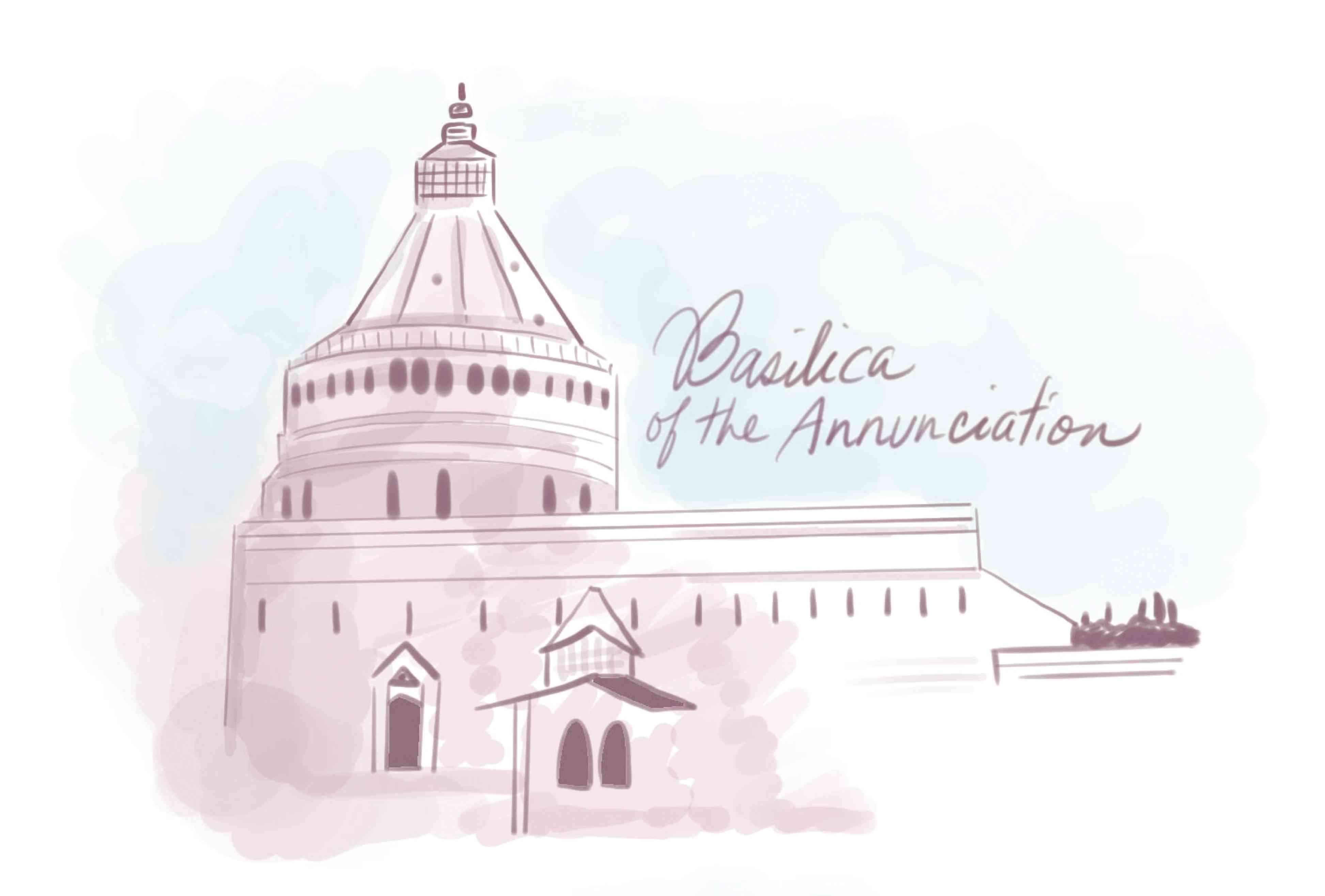A pilgrim’s paradise
Simbang Gabi” is a series of nine dawn Masses which start tomorrow, Dec. 16, and end on the midnight of Dec. 24. During the Simbang Gabi Masses, the faithful joyfully recall the birth of Jesus Christ.
Today, churches have been built on sites associated with Jesus’ birth and of his parents, Mary and Joseph. These churches have become pilgrimage shrines in Israel, where thousands visit each year.
Basilica of the Annunciation, Nazareth
Considered one of the largest Christian sanctuaries in the Middle East, the Basilica sits on the site where Angel Gabriel appeared to Mary to announce that she would give birth to Jesus.
Since the 6th century, ancient churches had been built on the site, but were toppled down by different conquests.
In 1730, the Franciscan order secured a decree from the Ottoman sultan to build a new church on the site. It was expanded in 1877 and was then demolished in 1955 to allow the construction of a new basilica.
The new Basilica was dedicated in 1964 by Pope Paul VI during his historic visit to the Holy Land, and was consecrated on March 23, 1969. It was built on two levels: the upper level follows the 12th-century Crusader cathedral, while the lower level enshrines the grotto.
St. Joseph’s Church, Nazareth
According to tradition, the Church was built on the former house and carpentry workshop of Joseph, father of Jesus.
Similar to other pilgrimage sites, the Franciscan church was built in 1914 on top of ancient church ruins. Water pits, mosaics, caves and brans from the ancient Nazareth can be found at the lower level.
It follows a Romanesque Revival style based on the ancient Crusader church built in the 12th century. Its apse features the Holy Family while its window decors tell the story of the place.
Milk Grotto Church, Bethlehem
Located near the Church of the Nativity in Bethlehem, the Milk Grotto Church is sacred to Christian and Muslim pilgrims, mostly new mothers and those trying to conceive or with problems with infertility.
Belief has it that by mixing soft white chalk with their food, and by praying to Our Lady of the Milk, they will have more milk or they will become pregnant.
Tradition holds that Mary and Joseph, while fleeing Herod’s soldiers on their way to Egypt, stopped in this cave. It is believed that it was here that drops of Mary’s breast milk spilled to the ground while she was nursing Jesus and had turned the grotto’s red-brown stones into creamy white.
The grotto houses an altar, an icon of Mary nursing, and many depictions of Mary and the baby Jesus.
The present stone church and monastery were built by the Franciscans in 1838 and, like other Catholic holy sites, are maintained by the Franciscan Custody of the Holy Land.
In 2007, the Franciscans completed a massive restoration of the grotto and chapel. Today, the grotto’s walls and ceiling are back to its original light color and nearly white—said to be something that is remarkable as all the other grottos discovered in the Bethlehem area are red and brown.
Basilica of the Nativity
The present edifice was built in the 6th century on the site of an earlier Constantinian basilica. It enshrines the traditional site where Jesus was believed to have been born, marked by a silver star on the floor.
Its remaining central portal had been reduced in size several times, and presently has only 1.2 meters of headway.
Its lowness was meant to prevent anyone from entering on horseback, to protect this holy site. The reduced dimensions of this doorway challenges visitors to bend down “in order to pass through the portal of faith and encounter the God who is so different from our prejudices and opinions.”
The Western (Wailing) Wall, Jerusalem
Joseph and Mary, as devout Jews, visited the Temple to present Jesus 40 days after his birth for the Jewish religious ritual of redemption. This wall portion was all that was left of the Temple built by Herod and which was destroyed by the Romans.
It had no significance until after the earthquake during the Ottoman empire in 16th century when Sultan Suleyman I ordered the clearing of rubble of homes adjacent to the wall for a prayer site for Jews.
Since then, Jews would make a pilgrimage to the site.
Prayers offered were fervent that non-Jews began calling it the “Wailing Wall.”
The wall measures about 50 meters long and about 20 meters high. The wall, however, extends much deeper into the earth. Visitors to the wall have long followed the practice of wedging small slips of paper, upon which prayers and petitions are written, into the cracks between the stones.
Sources: jewishvirtuallibrary.org, sacred-destinations.com, nazarethinfo.org, nazareth360.com, britannica.com, opusdei.org, seetheholyland.net, holylandpilgrimages.org, huffingtonpost.com and Inquirer Archives

